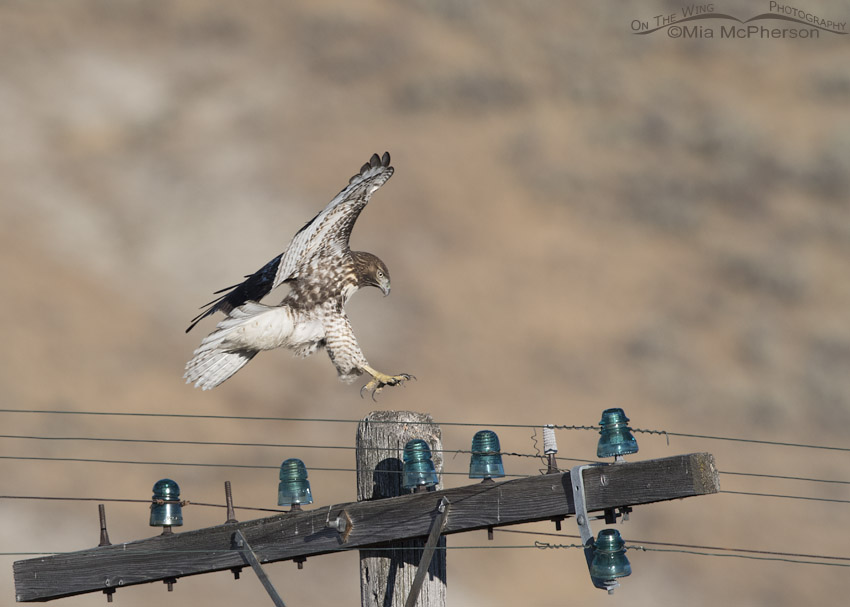 Red-tailed Hawk juvenile landing on a telegraph pole – Nikon D500, f7.1, 1/1250, ISO 400, Nikkor 500mm VR with 1.4x TC, natural light, not baited
Red-tailed Hawk juvenile landing on a telegraph pole – Nikon D500, f7.1, 1/1250, ISO 400, Nikkor 500mm VR with 1.4x TC, natural light, not baited
I’m lucky to be able to photograph as many western raptors as I do in Utah, Montana and Idaho. Interstate I-15 in some places has access roads that run nearly parallel to the interstate and are sometimes part of what was old U.S. Route 91 in Idaho and Montana that have power and telegraph poles that hawks regularly perch on. I am not always keen on photographing birds on power poles but I have learned to like the old telegraph poles that can be found along the railroad tracks.
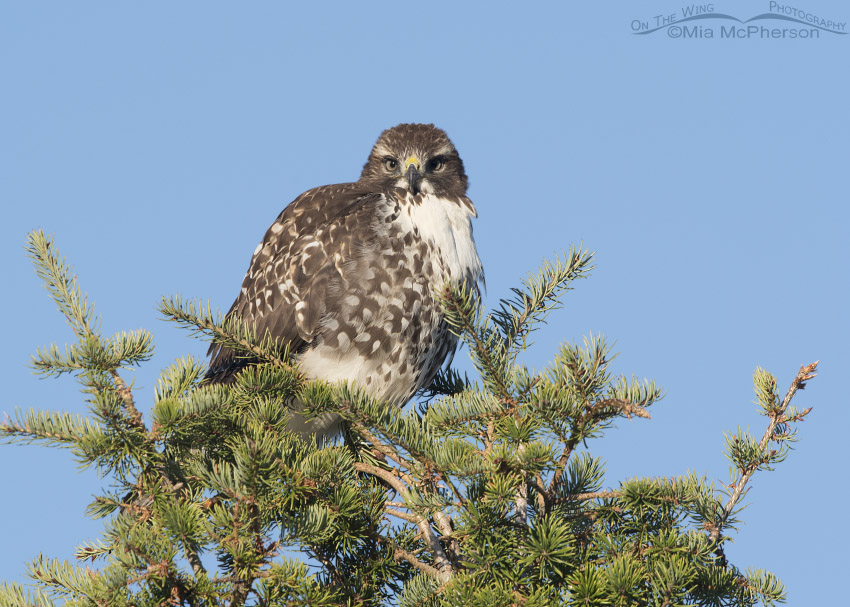 Juvenile Red-tailed Hawk next to I-15 – Nikon D500, f10, 1/640, ISO 400, Nikkor 500mm VR with 1.4x TC, natural light, not baited
Juvenile Red-tailed Hawk next to I-15 – Nikon D500, f10, 1/640, ISO 400, Nikkor 500mm VR with 1.4x TC, natural light, not baited
There are natural perches along the access roads right next to the interstate and if I am lucky I can find Red-tailed Hawks perched there on occasion too. This conifer was very close to the interstate and the noise that comes from the vehicles didn’t seem to bother this young Red-tailed Hawk at all. I was probably more bothered by it.
The access roads here usually have a shoulder where a vehicle can pull over safely to photograph the hawks I find. Since the birds are used to traffic along the interstate corridor they are aren’t as skittish when photographers use their cars, SUV’s and pickups as mobile blinds.
This immature Red-tailed Hawk never did fly away while I photographed it and then left it alone.
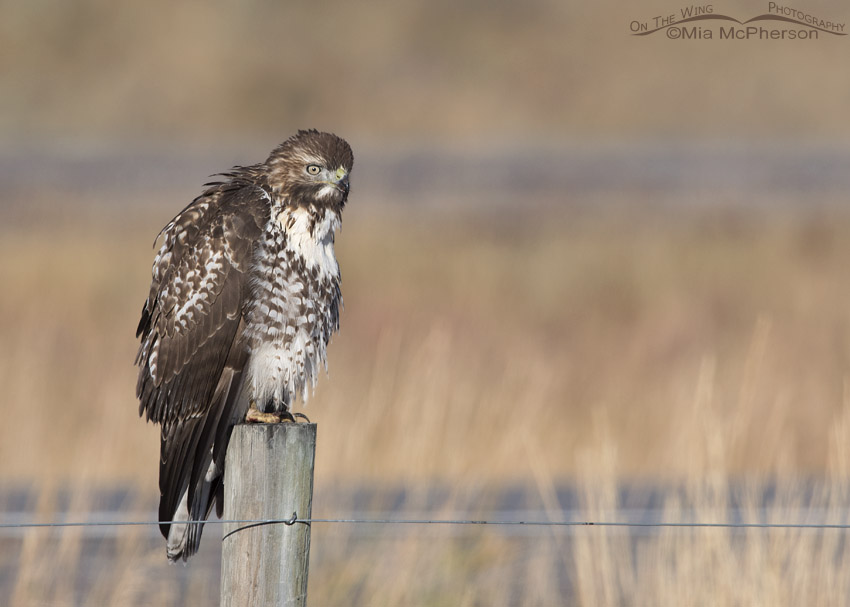 Juvenile Red-tailed Hawk perched right next to an Interstate – Nikon D500, f7.1, 1/1000, ISO 400, +0.3 EV, Nikkor 500mm VR with 1.4x TC, natural light, not baited
Juvenile Red-tailed Hawk perched right next to an Interstate – Nikon D500, f7.1, 1/1000, ISO 400, +0.3 EV, Nikkor 500mm VR with 1.4x TC, natural light, not baited
Photographing next to the interstate means I might have the road in the backgrounds of my images but even that bothers me less now than it did a few years ago. The birds have adapted to the poles, posts and fences we put into the ground along with the infrastructure we have built to get from one place to another and I guess I can adapt to having some of those features in my images now and then.
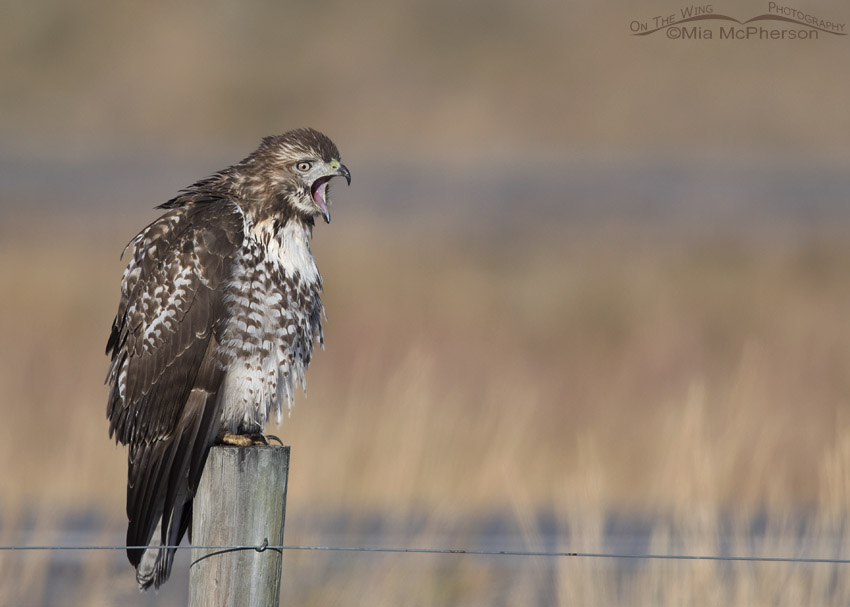 Yawning juvenile Red-tailed Hawk next to I-15 – Nikon D500, f7.1, 1/1250, ISO 400, +0.3 EV, Nikkor 500mm VR with 1.4x TC, natural light, not baited
Yawning juvenile Red-tailed Hawk next to I-15 – Nikon D500, f7.1, 1/1250, ISO 400, +0.3 EV, Nikkor 500mm VR with 1.4x TC, natural light, not baited
The areas along the interstate are not what I would call wilderness but I find lots of raptors there so I figure why not take advantage of their close proximity despite all the noise, especially when the hawks are so relaxed in my presence they yawn and sometimes even doze.
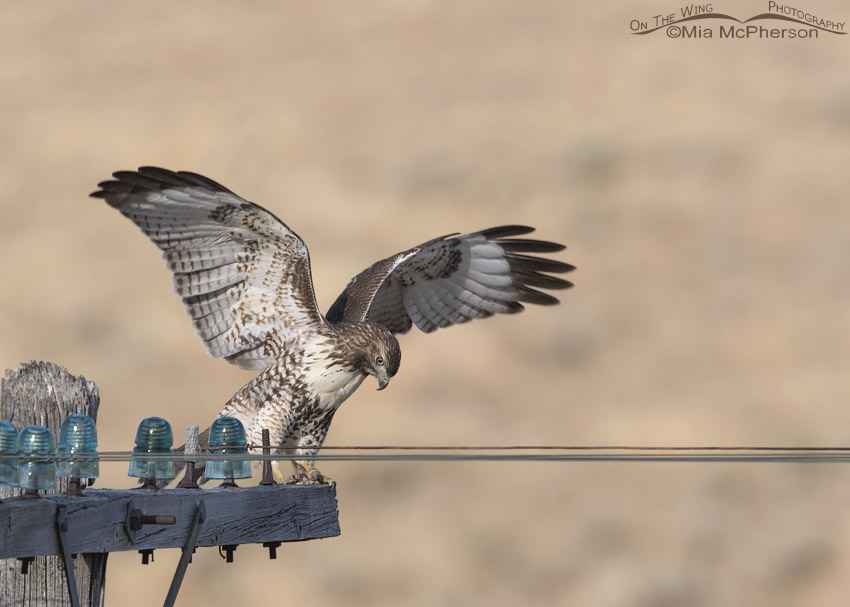 Red-tailed Hawk juvenile touching down on a telegraph pole – Nikon D500, f7.1, 1/1000, ISO 320, Nikkor 500mm VR with 1.4x TC, natural light, not baited
Red-tailed Hawk juvenile touching down on a telegraph pole – Nikon D500, f7.1, 1/1000, ISO 320, Nikkor 500mm VR with 1.4x TC, natural light, not baited
Photographing birds on access roads next to interstates isn’t everyone’s cup of tea and I know that but I’ve enjoyed the times that I have done precisely that and the images I have come away with. I still prefer the solitude well away from the heavily traveled roads though.
Some of the cons of photographing raptors so close to interstates from access roads are the noise of the traffic, having man made items in the images, finding room to pull over safely and having to pay close attention to other traffic that might come down the access roads.
One of my top pros of photographing raptors so close to interstates from access roads is finding birds that are used to traffic and are less skittish than birds that aren’t used to traffic and if I am lucky I might get beautiful take off shots when they do decide to take flight.
Life is good.
Mia
Click here to see more of my Red-tailed Hawk photos plus facts and information about this species.
Please be aware that stopping on the interstates themselves to take photos of birds is not something I do or recommend and in some areas stopping to photograph along the interstate except for real emergencies can earn a person a ticket and a large fine. I doubt that Highway Patrol would think photographing even a rare bird would qualify as an emergency, believe it or not.


The birds often adapt so much better than we do.
And Patty is right. Again. To see these birds is a very big privilege.
Just being able to see them is a luxury…
Beautiful images, Mia.
We face similar problems photographing Red Tails on man-made objects down here in southern Arizona. Fortunately, there are enough natural perches so that we can generally avoid utility poles and power lines. That said, I really love those glass insulators. The poles down here all seem to have very ugly ceramic insulators.
Glass insulators do have a special beauty and the image overall is wonderful !